|
29/3/2018 0 Comments INTERVIEW 6 - Nathan Kontny, CEO of Highrise: Deconstructing Highrise (and why “eating your own dogfood” is good for business)During the Techpreneur Interview Series, I’ve had the pleasure of speaking to entrepreneurs from the US, Canada, and Europe, bootstrapped businesses, full-time techpreneurs, a side-hustler, and entrepreneurs that have gone through accelerator programmes. In this final interview in the series, the Purposeful Products Blog features Nathan Kontny, an entrepreneur that has founded several businesses, including City Posh and Inkling Inc. Several years back he was brought in to run Highrise, a startup SaaS company whose core offering is a “simple CRM” system for entrepreneurs. We cover a lot of ground in this interview, including the intricacies of running customer interview sessions, strategic marketing, hiring, and hustling in general! In this post, we will "deconstruct" Highrise, and look at how an established SaaS company literally “takes care of business,” as explained through the eyes of its CEO.* This is a long post, covering a range of topics, including:
You can download the entire interview here. Welcome Nathan! First, could you tell us about Highrise and how it came to be? My understanding is that it’s a spin-off from another company… Highrise was originally launched in 2007 by the makers of BaseCamp. They were known as 37 Signals back then. They were having trouble keeping up with talking with reporters, and lawyers, and dealing with landlords… There were all sorts of collaborations that needed to happen. Because it was people based, rather than project and task based, it didn’t make sense to use the Basecamp project management software, so they created a simple CRM to do the job. It ran for years, but it was never the focus – that was on BaseCamp. The product hadn’t had any updates for a while, but was growing as a business, and it deserved more attention. It became a spin-off in 2014, which is when I came in to run it. Highrise is now its own company, and there are 7 of us in the team. We help people who need a simple CRM, and need to track who said what to whom, and when - whether it’s sales leads, speaking to journalists, or other tasks; it’s about making sure those things don’t fall through the cracks. In previous interviews, we’ve talked about how people got started, but I’d love to talk to you about the middle part of the story - about establishing the product, marketing, sales, optimisation, and fine-tuning… Just from looking at your website, it seems that you know your user base really well. There are a lot of references to how your customers work in your sales copy, with some really specific language - for example, when you talk about customers’ “lead spreadsheets.” How did you gather such intimate knowledge of how your customers think and feel? There are a couple of things – talking to them, and using the product so much ourselves. None of the Highrise employees came from BaseCamp. We didn’t have that knowledge of who the core customers were, and who was using it. So right away, we made sure that we used the product every day. We started using it for our internal helpdesk, and used it to manage all our incoming emails, and for managing support requests, feature requests, and customer requests for pricing and demos. We converted that all over to Highrise. Just the act of using the product every day to support ourselves gave us a lot of knowledge of the product, how people use it, its quirks, and its problems. I come from an Agile background, and when you consume the service that you are offering to customers, we call that “eating your own dogfood” – because if it’s good enough to give, or sell to others, it’s good enough for you to use as well, wherever possible! This removes those blinds spots you can have in relation to your product. When you use it yourself, you can empathise better with your customers, and get eyeball-to-eyeball with the things that don’t work so well on a practical level, because you're a customer too. How did you approach speaking to customers? It’s quite hyped-up parlance now, but we ran a number of Jobs to be Done (JTBD) interviews. JTBD looks at how people identify that they need to solve a problem, or transform in some way – in other words they recognise that there's a “Job to be Done.” A person then “hires” a product, that has a "Job to Do", to get them from where they are, to where they want to be. Jobs to be Done was made famous by Clayton Christensen, a Harvard professor and leading thinker on disruptive innovation. He's the author of the Innovator’s Dilemma, and the Innovator’s Solution books. Clayton did some research for McDonald’s because they wanted to increase milkshake sales. When they started asking people why they were buying them, people were saying: “I have this long commute to work, and if I "hire" a banana, I eat it too fast, and if I "hire" a muffin, the crumbs are all over me, and if I "hire" a bagel I have to mess around with the cream cheese, and if I "hire" a donut, one is never enough... but when I buy a milkshake, it lasts a long time. It supports me on my drive to work, and I’m still full at 10.00 a.m. (You can find an in-depth Medium article on the topic here, and some scripts and JTBD questions, written by a product manager from Google. You'll also find an article about understanding your customers on the Kissmetrics Blog (a blog well worth following for its quality content on a range of business topics.) If you'd like to learn more about the research done for McDonald's, you can find an article published in the Harvard Business Review about it, and the theory of innovation here.) How did Highrise manage the JTBD process? We borrowed Ryan Singer (Head of Strategy) from BaseCamp, as he’s well versed in carrying out Jobs to be Done interviews. Then we got customers on the phone, and basically interrogated them! JTBD interviews aren’t always a comfortable experience… We asked them about their businesses, and their emotions, and what they were going through when they bought Highrise, so the information you see on our website came from those interviews – lead spreadsheets, follow-ups, things not falling through the cracks – in fact we modified the language on the website after we ran those interviews. Customer interviews can be tricky. It’s easy to infer the wrong things from interviews, and customers can say one thing, but actually their motivations can run a lot deeper. How did you make sure you pulled out the right information from the interviews? Ryan knows Bob Moesa, who worked with Clayton Christensen, and educated himself in this area, but it’s definitely a skill you need to practice and get good at. I’ve been running my own businesses since 2005, so I’m accustomed to talking to customers about products, but maybe not getting the feedback I need right away. Customers love to talk about features. If you ask most customers what they want, most times they’ll tell you about a feature they dreamed up. This happened to me on Twitter the other day, when I was talking to a customer about a problem they were having. I had to say: “Just put Highrise out of your mind and tell me about the problem you’re trying to solve.” You must help the customer to distance themselves from the product temporarily, and to focus on the job they have, and the emotions they go through. You’re not paying customers to be innovators for you. It’s not the customer’s job to provide you with all the information you need to make good judgements about what you’re going to do. You have to get really good at teasing that information from them. You have to ask “Why?” many, many, many times until you think you’ve got all the layers – starting from the feature request, down to what’s really going on within their business that’s troubling them, and driving the need to ask for the feature. Here are some YouTube videos about our Jobs to be Done interviews. Thanks, that’s a great piece of advice. It’s important to be able to separate the product from the problem! Don’t just take a feature request at face value, follow up with the customer, because there could be more to the request than you realise. The process shouldn’t always be: “He, she, or they said they want feature A, so we’ll build feature A” without further discourse, or analysis… It could be a great idea, but you might be missing an opportunity for learning and gaining deeper insights about your customers, product(s), and pricing, so probe a bit more before going ahead. Toyota do this really well, they say: “Ask why 5 times…” I started thinking about Toyota as soon as you mentioned asking “Why?” many times! (If you haven’t come across it before, The 5 Whys exercise was invented by Sakichi Toyoda, the founder of Toyota Industries. I refer to an article about the 5 Why’s in my book Don’t Buy Software for your Small Business Until You Read this Book. Here’s the link to the article: Toyota Traditions. Ask 'why' five times about every matter.) It's important to set your customers up for the JTBD interviews. You need to let them know that you’re going to be drilling down, otherwise it feels impolite; “No, but why are you…? But why…? Please tell me why…!” It can get uncomfortable when you’re trying to investigate the psychology of people. When you ask customers a lot of questions, you turn the spotlight on them, and people often want to focus on what they want to focus on, and may not go into real depth with you. From the perspective of someone that's worked on a lot of product teams, I'd say that people often request features based on the first idea that comes to them that seems like the answer. That’s why psychologists are trained to get deep into people’s psyches, and to understand their motivations. As people who make products, we need to channel some of that. A product team could take many days (or longer) to consider a feature and its pros and cons, and then to plan it out, and work through all the kinks in the customer journey / steps in the process. They will also consider the right technical approach, and the best way(s) to deliver the functionality and present it on screen etc. I think it can be useful to educate customers about how much work and thought goes into creating quality features, and why we need such detailed information... I also noticed on your site that you tick all the best practice boxes with regards to marketing - you’ve clearly defined your customers’ problems, your product’s benefits, and you provide lots of social proof - quotes, tweets etc. Could you talk us through the work involved in getting your Homepage to that stage, and what went into bringing all those elements together? The JTBD interviews provided a lot of it. People talked about searching for “something simple”. Even the top phrase on the page: “Simple CRM.” Everybody was looking for simple. People also kept talking about “zero learning curve.” We talked to all these entrepreneurs that were super busy, and were hiring their first sales person, or business development person, or support person that they needed to collaborate with. They didn’t have time to read anything, they just wanted something they could turn on, that would work really fast. Salesforce, I don’t think you would expect to just turn on. If you work at Accenture, or one of those big consulting companies, they have “Salesforce Champions” - people with a dedicated responsibility to assist users. We know from our interviews that our customers don’t have champions. They just need to get out of their spreadsheets, today – right now! So all that helped with the language. Our marketing covers versions of that message. The wording for: “We have a manual, you won’t need it” came from thinking about other products that we all really appreciate for just turning on and working, like an iPhone. People say they love iPhones because they’re so simple, and because they didn’t have to read a manual. It’s just intuitive. As you say, there’s a ton of social proof, I’ve been making products for a long time, and I’ve seen over, and over again how important it is to have social proof, whether it’s logos, or case studies. It varies – for smaller businesses you need a lot of quotes, maybe tweets. If you’re a small SaaS business, and you’re dealing with enterprise businesses, they’ll want to see case studies, or how other businesses used your product and saved money, or how other businesses have implemented your product. It’s all different versions of the same thing; they want to know; do other people like using you? We also looked at other ways to provide social proof, from magazines like Inc magazine, and Entrepreneur magazine - publications that I know my customers read. I’m very attuned to that. The JTBD interviews really helped guide us to highlight the right benefits, and to answer the question: “Of all the emails we receive, and the things people are saying about us, which ones are we going to spend time highlighting on our homepage?” Thank you. How long has it taken you to “optimise” your homepage? Would you say your homepage is optimised? We’ve been optimising it forever! BaseCamp optimised it a long time ago, then we came in… I can’t even tell you the number of times I’ve blogged that we just got another 31% improvement on our Homepage, so it’s never done! I just finished an experiment 2 weeks ago, where I added a link: “What is CRM?” in the footer on the site, it’s a popular search term, so it was an attempt to do some more SEO work. That's a great example of how tweaks and changes can improve a website, make it more targeted, capture more leads, and convert more sales. If you're doing this, have your website analytics in place first so you can compare before vs. after! Are there any other marketing tactics that techpreneurs can use when putting together a high converting website? You’ve got to get the layout right, the social proof… I’ve been doing web design reviews every week on YouTube, where I look at someone else’s site and I feel that people are getting testimonials wrong. Either they don’t have any at all, or they’re buried somewhere at the bottom of the page. I think you need them high up to convince people to stick around and not bounce right away. Some of the arguments I get for people not having testimonials are:
But there are ways to hack around that. Get the product in the hands of friends and people you know, and you’re likely to hear something great. At first it was my sister, or my mom commenting on early sites that I worked on. There’s nothing wrong with putting testimonials from your sister, or your mom on your website. If they said it, and it’s true, who cares?! You don’t have to say: “This is my mom”, although if you do it could be interesting! You can say: “Here’s what she said, [and use your mom’s name] she loved this product!” I didn’t pay her to say those words, she wasn’t lying. Another thing - go to the biggest customer that you can find, and ask for an introduction. Offer your product, and give yourself away for free. We used to do this at the first company I started with Y Combinator, and we gave our product and ourselves away for free to O’Reilly Media. We made ourselves available, and went to their offices and showed them how to use the product. It was free consulting, but at the end of the day I got to use their logo on our site, and mention them in interviews, and use cases, and they were talking about it too and about how well the product worked… We didn’t make a dime from that deal, but the next one we could charge for, and it generated a good buzz. They are good tips! Going back to testimonials... User testing is a great way to get quotes and testimonials too - usually someone says something which is quotable! We’ve used sites like Usertesting.com before. You pay a price, $20 - $30, and the tester uses your product, and they record a video. Whether it’s the first, or second iteration of your product, someone will make a positive comment about what you’re doing. Keep listening to the feedback, and make the product more useful, and prettier. I would say: “Hey, can we put this comment on the website?!” and the testers said “Sure, no problem, I love the product, put me on there!” You need to ask for permission, but as you say, it's a wonderful way to get testimonials. They're a great, low-cost resource for startups. I’ve used Whatusersdo for clients, but they're more expensive. Nathan, what’s your preferred social media channel, and why? Right now it’s YouTube. It used to be Twitter. I do love the simplicity of Twitter; the short blocks of text, and not needing to become friends before you can reach out to people. It’s also easier to sift through feeds than it is on Facebook. Although I have more followers on Twitter, if I look at where the world is going, it’s going more towards video. Facebook is moving more towards video, and YouTube keeps on growing. Kids want to be YouTube stars, rather than athletes when they grow up! If I want a place in the future, I need to become good with video. How’s it been going? Has it had an impact on your business? I do this daily vlog, and there’s a lot of experimentation. It’s not growing really fast, but it’s growing. It’s not easy to say that traffic from YouTube is going to the Highrise website, but it’s a long game that I’m playing. People email and say they’ve been watching the videos and finally got their business started, and they’ve signed up with Highrise. That’s an interesting point. There was an interview I did for Entrepreneur Interviews Series 1 with Rob Cubbon, where he talked about the importance of thinking about the future and the “big picture," and setting time aside to work on long-term goals vs. just existing in reactive mode. Thanks for highlighting how you do this! It’s not like people are watching my videos, getting their credit card out, and signing up, but more about people following me for six months, and consuming my content, and now they’re signing up. People say they love how I’m helping them on YouTube. I use it as a place for constantly testing content. I post a new video every day, whether it’s web design advice, business news, or going about my day with my 3-year-old and trying to draw lessons from it. When I see what hits, in terms of more likes on this video, or that video, then I’ll write up a nice version of that in Medium, and that Medium post will end up driving traffic back to Highrise. I try not to take a myopic approach, because you can take one piece of content and spin it off into 5 other things and one of those might generate the impact that you want. I’d say my Medium writing generates more traffic than my YouTube channel does, but it’s all inter-related. Medium seems to be helping a lot of entrepreneurs gain traction... I think seeing your thought process laid out will be interesting for readers. A CEO thinks about tomorrow, and if you’re always thinking about tomorrow, in many ways, that approach starts to take care of “today”. It’s like that quote by Sean Patrick Flanery: “Do something today that your future self will thank you for.” So, we’re talking about these different activities having different length sales cycles? The YouTube cycle is just longer… Right. One way to do it is to dump a bunch of money into Google ads, but once the money runs out, the traffic stops! You really need to invest in things that are going to be long term traffic generators. A lot of entrepreneurs have their heads down, working on a product, and they’re not doing any audience building activities. They’re focused on features, and I think they’re hurting themselves, because it’s likely that the product you’re working on today is not the product you’re going to be working on 5 years from now, and if it’s not, you’re going to be starting over with something and you still won’t have an audience to use that product. I feel you could reverse the priorities and build an audience whilst you’re coming up with that genius product. Whilst you’re building a product, don’t forget about building an audience. I’m a big fan of the long game, and investing in meeting people online, and providing value, so that one day they’ll actually use the products you’re selling. I really like what you said there. When you think about the concept of constantly starting from scratch with new products or services, it could be quite soul destroying! You're playing a bigger game than just what’s happening today, or this month, or this year, and not just building, or making “stuff”... I was with Y Combinator with a startup in 2011, and I made that mistake. I didn’t build an audience, we were paying for Google ads, but we ended up walking away from that product, and ended up starting from scratch again with the next product. I refuse to make that mistake again! Now I try to encourage customers, and say: "This is the product, but you should really follow what we’re doing on Medium, Twitter, YouTube, and Facebook." One day, if we move on to a new product, hopefully they’ll still be around to try the next thing. How much time, do you or your team dedicate to marketing on a weekly basis? I spend almost 100% of my time on marketing these days. When BaseCamp spun off Highrise, they hadn’t worked on it since 2011 and it was slow, broken and not quite right. At that time, I put a lot of focus into the product. Back then it was 10% marketing, 90% product. I was working on features every day. Now we’re a larger team, there are people that can focus on the product and I need to crack the marketing challenges that we have. We have a great product, but not enough people know about us. I should have started even sooner on marketing. People want good products, obviously, but it doesn’t do you any good if nobody knows about them. I don’t know what the magic formula would have been - 50-50% probably. Marketing is different for different people, but for me it’s everything from Google ads, SEO, optimising the website and making sure it continues to convert better, and pricing plans, and making sure they can sustain the business. It’s writing blog posts, it’s posting YouTube videos. It’s not just advertising. Everything that you’re doing aside from working on your product, and building a team is probably attributable to marketing. Where would you focus your energies if you were starting again? I would have started with YouTube even earlier. Now there’s video on Instagram, and videos on Facebook... But video is harder than writing. You’ve got to get good with video, and editing, and telling a good story, so the sooner you start, the better. It’s going to take a while… When I look at the videos I posted 18 months ago, I cringe. The lighting is terrible, the editing is bad... if you’re going to be terrible for a while, just start practicing now! I’ve been on Medium for a while, but I probably would have done more to pursue writing on other publications. I’m on the Signal vs. Noise publication from BaseCamp, which has a nice following, but I feel that I’m probably talking to the same group. If I want to diversify, and reach more people, I’ve got to be on other channels such as The Mission, and Startup Grind. I’ve only published a few things with them, and I should have considered other publications too. I’ve been thinking a lot about that recently – publishing on your own site vs. other sites, and looking at how you can reuse, and adapt content to save time without affecting your SEO. The current wisdom seems to be that it’s best to check that Google has indexed your article on your blog first (if it comes up in Google searches, you'll know it's been indexed) before you upload it to Medium. If you do that, Google recognises your site as the "master" source for the content. Then you can publish on Medium. The risk is that if you publish to other sites first, and then publish to your own site, it could appear to Google that you’re duplicating / copying content, and your site may be penalised. Others recommend publishing part of your post on other sites, and linking to your site so people can read the rest. I'm experimenting - we shall see! That's a tough one, the whole SEO thing, ‘cos you're right, you're putting a lot of content on Medium as opposed to your own site. I think we made that mistake a little bit - putting our content on Medium, when we don't have enough content on Highrisehq.com. We're trying to crack that. It's totally ok to rewrite an article. You can write something once for Medium, then write a different version of it for your blog, or website. It's not that hard to do. Don't just change words for synonyms, but take another crack at it, alter it and add another two hundred words, or make it 200 words more concise, or pick different anecdotes… We're doing that now to get more content on our website where all that SEO traffic is more valuable than it is on Medium. Medium has been great for us. It’s such a great social channel for spreading a message. That doesn't mean you shouldn't have your own blog, and your own content, but it probably means that you can't forget about Medium. (You can use the Medium content upload tool to import your existing posts onto Medium.) There's a constant learning curve with business, isn't there? Can we talk PPC (Pay Per Click advertising)? Some entrepreneurs have said it doesn't work well for their businesses, because based on what they charge customers, they can't justify the cost. However, others have said it does. What are your thoughts? PPC is expensive and in many categories for CRM, it's insane! It teeters on not being affordable for us either. There are very few wins there. Often, I don't think paid ads is the right way to go. However, it can help you test products, even if you're not making enough money from it. It can get the word out about a product early on when you're struggling. I don't think it's sustainable for most people - you and your competitors are just giving money to Google, and the cost of your ad placements is going up… So, no, I don’t love it as a long-term channel. I'm much more of a fan of focusing on longer-term investments in audience building; finding people who want to follow you for years, who will help you to get your product out there. Yes, you've got companies like Salesforce to compete with! We even compete for keywords that Salesforce probably doesn't care too much about like “easiest CRM" - come on Salesforce, you're never going to be the easiest to use! They make so much money from their Enterprise customers that it makes it hard to compete, even for keywords that probably don't mean that much to them but mean a lot to us, because the prices have been jacked up so high. As a new business, you should be careful with your budget, and spend your time on YouTube videos, writing, and talking to people on Twitter and Facebook. Thanks for that Nathan. Are there any tools that have been useful for analysing traffic and customer activity on your website? I've got three analytics tools running all the time. My favourites are Clicky, it’s a little old school, but I like it for real-time stats and web analytics, and we use Google Analytics a lot. It’s a pretty good tool which is accessible for startups, because it's free. There’s also one called Heap Analytics. You can basically turn it on and they measure everything. They’re capturing every click and you can come across things that you may not have thought you'd be interested in before – “Oh, do people click on this link or not?” If you suddenly think of a question like that, they have the data, but it can get pricey pretty quickly. Often with analytics tools, they have a free plan and then an enterprise plan, so be careful with them - they are going to be useful early on, but then they get so expensive! We also use Optimizely a lot, but it's the same thing there. I think Optimizely has got a really cheap starter plan, but then it goes to Enterprise really fast. I noticed that trend with analytics tools when I was researching products to include in Entrepreneurial Espresso, which features over 450 software applications for entrepreneurs. [You can download the first 3 chapters of Entrepreneurial Espresso for free here.] The issue is that customers get used to them, invest time in them, and then may have to abandon them because they can't afford to use them anymore. Yeah. I'm getting annoyed because it keeps happening. I'm not going to call them all out by name, but I was using a tool that was 75 bucks a month and then it became 175 bucks a month, and then it was: “This feature is 175 bucks a month, but if you want this feature it's another 175 bucks a month!” You think: “I’ve invested all this time into you, and now your prices have become astronomical...” I understand it’s how they need to charge to run their business successfully, I guess, but I don't have a good feeling about it when it happens. There's another tool I won't name, but we got in with them when they were still using SaaS pricing, and we were spending a hundred bucks a month with them. We kept putting in more data, and then it became a thousand bucks a month. It was fine, as our usage was changing and I could see that, and we could afford it, but all of a sudden we found ourselves in this category where they said: “Well, we've got rid of the thousand bucks a month plan, and now you're going to need to get on the phone with one of our sales people to talk through your usage.” and I thought: “I don't want to get on the phone with a salesperson! I don't want to haggle over price. Just tell me what it costs, and keep it consistent!” These are important points to consider if you’re considering pricing, and your sales process. The beauty of SaaS is that you see how much it costs, get your credit card out, and get started. No booking appointments, or fearing that someone is going to waste your time, or sell you something you don’t want. Adding in the sales piece adds friction to the process. That’s such an “Enterprise” mentality, thinking that people want to speak to your sales department! Unless they have questions, they usually don’t. They just want to get on with buying and using the product. Data storage / data centre costs rise as more data is stored, and companies are passing that cost on to customers, but it’s still extreme. In my software survival guide for small businesses, I advise readers not to focus exclusively on the entry-level price when buying software, but to look at the second price tier, and the third before committing, and to think: “It’s fine now, but can I afford this product at the higher tiers?”, and “How soon will it be before my usage reaches those more expensive tiers?” If the answer is "no", or "soon" to those questions, keep looking, because it’s so disruptive to disengage with a product you’ve become accustomed to using, and to start hunting for a replacement. I know! At a certain level when you’re trying to do new things with products, it involves sales people, and now I'm just stuck and I'm probably just going to toss the product away, because I really don't have the time to deal with them. I think there could be a gap in the market if somebody can make this work, and offer a reasonably priced tool for small businesses starting to consume more data, where there’s not this huge price jump, and crunch point where businesses are looking at the pricing and saying: “Hmmm, what now?” You would think so. That's why I like Clicky so much. They’ve been around for years. There are only a few employees, and I don't think they’re VC funded, so they were able to create a sustainable business, and they charge reasonable prices. I think a lot of the analytics companies are VC funded, because they need to store gobs and gobs of data, but we all know that VCs want a huge return on their investment, and if you don't make money fast enough… Now the VCs are looking for results and you're going to be under pressure, and if you want to raise more VC funding this is where businesses start to say: “Look! We've moved into the Enterprise market!” At that point, it's almost like there's nowhere else to go... Can you tell us about your journey as an Entrepreneur, and now as a CEO? You've founded several businesses, and been through the Y Combinator program twice! I always wanted to run my own business my dad was very entrepreneurial, so I always had a taste for it. When I was in school I had an internship with a uranium processing plant. I worked as a chemical engineer (Nathan has a Bachelor’s degree in Chemical Engineering.) I worked with this entrepreneur; he was the plant manager, on the side he was going around measuring air quality for people. He also had plans drawn for a pizza restaurant he wanted to start... He was just inspiring, and I had every confidence that he would succeed. When I got out of school I wanted to accomplish that too. I got a traditional job at Accenture, but I was always doing these little side hustles here and there. I was doing some consulting for a friend of mine, building apps and stuff. Then Y Combinator came about in 2005. I found out about it and we applied, and got in. Since then I’ve been starting and building new businesses. I did Y Combinator for 5 years, and did it again in 2011. That didn't quite work out, but I was able to turn that into Draft, the writing software, and the Highrise job just landed in my lap because of the work I had done with Draft. I couldn't have predicted how this path was going to go, I was just open to different opportunities. There have been struggles, especially with the first business where you wonder: "Can we do this? Is it working?” There's a lot of self-doubt, and a lot of experiments, and stuff that doesn't work... You lose your confidence over, and over again. That's it. That's the journey. That's what you go through. I read an Elon Musk biography, and it was a good one. They were on the 8th or 9th rocket test, and on their last rocket. They had nothing left, and they probably weren't going to be able to raise any more money. Then it finally works. You've got to be open to failure, after failure, and then other times things work, and get you onto the next challenge. Uranium?!!! I want to ask you so many questions about that, but I don't want to go off track! When you're starting a new venture, do you have a way of deciding when "enough is enough"? I think one of the big things with knowing when to quit is when you feel that you're not learning anything anymore. The way folks like Elon Musk achieve success is through experiments. He's always got another idea for an experiment. If you're experimenting and not learning anything new from it, then it's time to quit, because you won’t have an idea of how to fix things and make them better, so you can test that new hypothesis, and move to the next stage. But, if you do learn something, then keep going! In terms of work - I'm not a fan of pushing myself past any physical limits any more. When you're young you think: “Oh, I can stay up all night," but you quickly get sick! Back in the day at Y-Combinator, you’d get these kids who weren’t taking care of themselves. People got scurvy, they weren't getting enough vitamin C… It's not worth it! My dad was in the hospital recently, my mom has been sick, and it sucks. Life is so fragile, life is so fleeting it's not worth pushing ourselves to become more successful by hurting ourselves, by not eating right, by not working out, by not getting enough sleep. I give up when it’s 10.00 p.m. and I've got to go to bed to get 8 hours’ sleep. I don't try to physically overpower any problems I have with running a startup. I love your comment about not trying to “physically overpower” the problems that you have within a business. That can only be done for a limited time. We know that long term it's working smart, being disciplined, and having good systems in place that gets things done, but it's so hard not to use brute force! We're all guilty of it. Recently I had a situation where I had some work to deliver, and I was up late, then couldn’t sleep, and before you know it you’re sick and it ruins a week, or two weeks. You might get a small win now, but what did you get yourself? Probably a net negative overall. True! Sometimes the boundaries you set yourself are the most important ones. I’d also love to talk about customer support and customer success. I've been watching the development of the SaaS market as a customer, but also out of interest with my business analysis “hat” on, in terms of the different strategies that companies are using. I've noticed the whole concept of "customer success" has really grown over the last few years. How do you approach those concepts at Highrise? There was a guy who approached me who wanted to work at Draft. What was interesting about him was that he proactively helped a bunch of people in our customer support forum. I was busy and was having a hard time keeping up with customer support, but without me even asking, he was assisting people. I thought that if I hired him he would just get stuff done - I wouldn't have to tell him how to make a customer happy, he just knew how to do it and figure it out for himself. Not everyone is like that and can manage themselves. Others want guidelines about what they should do, and how to do their job. So, to answer your question you need to have lots of people like Chris, and support them in making your customers happy without you having to be there all the time! Look at Zappos (a shoe company renowned for excellent customer service.) The people at Zappos have been empowered to just make customers happy. Their process is great. The big lesson is to hire people who feel very responsible, and to empower them. Yes, that's hard to train or teach. I find that there’s a lot of customer service work done on autopilot, where agents aren't really listening (or reading) carefully, or paying close attention to what is being said… There's no 2-month Highrise class. That’s not going to cut it. In a startup, you need to be able to hit the ground running, and do whatever it takes, and to learn whatever you need to learn to do your job, which is to satisfy that customer on the other end of that email, and you need to be able to understand, and help them with whatever they're struggling with. There's definitely a personality trait there that you want to look for… Have you been able to narrow down a way to find those traits? There’s the Newcastle Personality Assessor (NPA) based on the “Big Five” personality traits that everyone has to a greater, or lesser extent - Agreeableness, Neuroticism / Emotional Stability, Openness, Conscientiousness, and Extraversion. I’ve investigated trying to select for high conscientiousness, to identify people who are achievement focused, but also disciplined, and thorough, but it's hard to do! I think one of the things that helped me with hiring Chris was that he was just out there in the world writing blog posts and talking to people online. Today, with social media you have a really good window into how people communicate with other humans without waiting until you get them in an interview. If someone’s applying for a job, go and see how they talk to people on Twitter. Follow them on social media. Are they helpful? Are they being constructive? If they're not on social media, and if they're not answering questions, and they're not writing blog posts, then that's a problem too. In an interview people might say: “Oh, I just haven't had time to do that,” but we all have the opportunity to do it. There's nothing stopping you from signing up for a Twitter account and being a productive member of some sort of community. One of the things I look for is people who are out there publishing things, whether it's open source products, or just writing a lot and being friendly and useful. There may be ways of testing for that in an interview, but there are ways of monitoring how people interact with the world just using social media. What you've said is far better... That’s concrete proof. It’s physical evidence, so it’s probably better than a test. Thanks for that comment! (If you'd like to see what your strongest traits are, you can take an NPA test here!) What's your top cash flow, or money management tip for technical entrepreneurs? It's just the way I run businesses, but I don't like to raise money, and I don't like to have a lot of debt. Even with my first businesses, we only raised $17,000 with Y Combinator, it was peanuts. After that, we didn't raise any more - we focused on getting customers to pay us. Even if they weren't the perfect customer, they were customers that could pay! People can be too obsessed with finding the "perfect customer", and have a narrow view of who their customer is, with good reason - they read The Lean Startup, which says that you need to find the perfect customer and do all these perfect experiments, but when you're struggling to pay the bills, it's not always easy to find perfect customers to pay those bills early on. With Ink (one of Nathan’s businesses), we had customers that wanted to use our products in ways that we hadn't even imagined, and hadn’t wanted to use the product, but they were going to pay us $30,000, and that was going to fund product development for the next five months. We did it again for a pharmaceutical company that wanted the software, and wanted us to give them a licence. We were a SaaS company with a monthly payment model, and there was this business that wanted to get our code, and they wanted to pay us money for it. I think it's ok to do that once or twice to pay the bills. Those customers can give you the runway to find your perfect customers. Sometimes you need to get a bit creative and find other ways of getting money, and you may need to deal with some not-so-perfect customers. So, be pragmatic... Exactly. Also, be sensible with money. I don't understand the number of people whose first action as soon as they raise money is to use it to buy office space. It doesn’t make any sense. You can get a co-worker pass these days for 50 bucks, and you can rent a desk somewhere, or work from your home. There is no return on that money - you’ve just burnt it so that you have an office to sit in. (On the topic of licenses, take care with your legal agreements when licensing your product to customers. A common type of end user license is a EULA - End User License Agreement, but if the client wants additional rights, you may need to call in a lawyer to help you cover all the bases and include the necessary clauses to protect your Intellectual Property. You can find a cheat sheet of free online contracts and legal resources for business use here, but remember that tailormade contracts are likely to be a better fit for your needs.) You can reflect, and let it sit in a bank account for at least a short period, because sometimes priorities change, but when it's gone, it's gone! What's next for you, and for Highrise? We need to get much better at marketing. We’ve gotten pretty good at optimising and improving our conversion rates through testing, but we need to get better about spreading the word, and getting people to check out our product. We've also been considering PR campaigns, and stunts to create a buzz this year. In terms of YouTube, I’m getting better with experimenting and looking at what works - I'm not just doing the same thing on repeat. I'm looking at what’s going to draw more people to the channel. I'm also spending more time on SEO on YouTube, looking at what kind of tags and titles will draw people in. We’re also building cool features, of course! Features are awesome, and customers love them, but that isn't part of the marketing flywheel. You can't just keep shoving stuff on to your product to make people come and pay attention to you - you've got to find something a bit more sustainable, probably along the lines of more teaching, and more helping people. Thanks Nathan. I wish you, and Highrise all the best! Where can people go to find out more about Highrise? The best place is Highrisehq.com: http://highrisehq.com. You can find Nathan’s YouTube channel here: https://www.youtube.com/nathankontny. *Please note that Nathan left Highrise during 2018, but you can still connect with him via YouTube, or Twitter: https://twitter.com/natekontny.
0 Comments
15/3/2018 0 Comments Interview 5 - Alexis Theriault, “achieving 500,000 app downloads & 10,000 daily users with a young family, and a full-time job!”This is interview 5 in the Techpreneur Interview series featuring Alexis Theriault, the founder of the Brain Focus productivity app. This week, we'll be chatting about his experience of hitting 500,000 app downloads and 10,000 daily users - all generated from his side-hustle; an app development business. Welcome Alexis, thanks for joining me on the Purposeful Products Blog! How long have you been an entrepreneur? I studied software engineering, and now work as a software developer. I started working on my own apps about 3 years ago - mostly to learn a new technology, but then saw the potential and started trying to earn some money! Did you have any experience of building apps before you built Brain Focus? Not too much. At work we had started building mobile applications. The first thing I did there was application maintenance, and then we decided to rewrite an application using new tech. That was when I started working on Brain Focus to learn about all aspects of mobile development. What else can you tell us about your app? Brain Focus is a mobile application based on the premise that your brain needs a break in order to be more productive. It can be used to achieve techniques like the Pomodoro, or the 52-17 (52 minutes of work, with a 17 minute break). I've tried several cycles, including the 50-10, but never the 52-17! When I first left permanent employment to work as a freelance Software Delivery Consultant, some of the developers I worked with used Pomodoro timers to manage their time when working on product features and user stories. That was my first introduction to the Pomodoro technique, a technique to enhance productivity and concentration, by working on tasks in short, intense cycles. There are many productivity cycles out there - it’s about finding the rhythm that gets you the best results. If you're interested in exploring the benefits of working this way, here's a free chapter on productivity and focus, taken from my book of tools and software for small businesses, Entrepreneurial Espresso: http://bit.ly/free-productivity-chapter. Brain Focus started as a single app, which is the productivity timer, but then I created another application which is called Brain Focus Time Tracker, which tracks time in a simple way. You create an item in the app, start tracking it, and stop the tracker when you’re done. Then you can look at your statistics to better understand where you spend your time. When I can't decide between similar apps, I usually download 2 or 3, keep the one that’s easiest to get started with, and delete the others. When I was looking for productivity timers a few years ago, yours won! I like the app because it has clean, simple user interface and design, it's easy to use, and there are some nice options available via the Settings menu. It’s the perfect example of “just enough” functionality arranged logically, and without going overboard. There are a long list of options in the Settings area, but they are all clearly labelled, and can be easily accessed by scrolling up and down the screen. Work, and break durations can be chosen, and the app can be set to vibrate, or play a sound when your time is up! How did you first come to recognise that there was a problem that you could solve with Brain Focus? When I started building the app, there were already a lot of similar applications in the App Store. I thought: “I’ll do this for fun, and we’ll see what happens.” Then I started to get some downloads, then more and more followed, along with some good reviews. I started to get hundreds of users per day and began rising in the app store listings. At that point I started to think that I had something. Based on the good feedback I had received, I began to think that I could earn money from the app, which would help in investing more time into it. Were you able to get product feedback before launching, Alexis? Not before launching, but I started to receive feedback from users post-launch, and started implementing the features that people requested. That really helped me! I did do a small Beta launch with my co-workers… What are the most important lessons, or realisations you've had about life as a tech entrepreneur? Building software is costly (in terms of my time) and people are now used to getting software for free, so it can be challenging to monetise. If you're interested in Alexis's business model, he has opted not to charge upfront for his apps, but offers a Go Pro upgrade option which works like an in-app purchase. Users that wish to move to the Pro plan can choose what they want to donate (known as PWYW - Pay What You Want, or Pay What You Wish pricing) by selecting from five set price points. In previous Techpreneur Interviews, (see interview 1 with Kyle Richey) we've talked about Apple's App Store users being more "primed" to pay for apps than Google Play Store users, but this is the first PWYW model that we've covered on the blog. It can be nerve-wracking when you first start charging customers to use your services - especially when customers have easy access to free apps. PWYW empowers the customer, and can be used to gather data about how many users choose to pay, and in this case, to monitor which price points are most (and least popular). Should Alexis choose to change his business model in future, he will have historical pricing data that he can refer to! What else weren’t you prepared for, or expecting? The Android software versions all have different behaviour. There are variations between different phone manufacturers too, so there are often bugs on one phone, but not on others. This makes it hard to reproduce and fix problems, and I needed to buy a lot of phones! It's never the first thing techpreneurs think of when running an app business, but when creating apps, you'll need to be prepared to do testing on different devices for the reasons that Alexis has mentioned - devices aren't the same, and they behave differently. Unfortunately, you can't rely on your app performing in the same way on different devices - even different models made by the same manufacturer of a tablet, or smartphone. You can test manually, but you can also use app testing services, such as Amazon's AWS Device Farm, which give you 1000 minutes of free testing, and remote access to a range of real devices of different makes and models - all managed via the Cloud. It depends on your product, but in my case, it's hard to test functionality related to measuring time in the Cloud, so I use physical devices when I test. Let’s talk Android vs. iOS, web apps, and desktop apps. Do you have a preference? Android, since I feel it's an easier, less costly platform. iOS second, since most people prefer to use their phones. Then web. I think desktop use is declining, but progressive web apps could change everything. What have been the biggest highs and lows of your experience as a tech entrepreneur? Seeing increases in downloads and usage is my biggest high, such as when I reached 500,000 downloads, or 10,000 daily users. My lows come if I introduce bugs into new app releases. What’s your top cashflow/money management tip for tech entrepreneurs? My best advice is to keep your day job, so that you don’t expose yourself to too much risk. That is a choice, but it can be better to start whilst employed, and when you think it’s a good time to invest all your time on your project, then you can leave. What’s a typical day like for you now? For now, it’s a full day’s work, then life with kids! What would you do differently if you could go back in time and give yourself some advice now you’re “older and wiser”? Start when you’re young! I would have started working on side projects earlier, when I had no responsibilities (no house, no child, no girlfriend) because the more responsibility you have, the less time you have to work on projects. If you have less responsibilities, it’s easier to quit your job, and to focus. Thanks for the advice Alexis! What’s next for you and Brain Focus? I’m hoping to have more time to invest in Brain Focus, so that I can improve the Android version, and build an iOS version with the same features, and more! Where can people go to find out more about your app? Brain Focus Android / Google Play: https://play.google.com/store/apps/details?id=com.AT.PomodoroTimer&hl=en_GB iOS / App Store: https://itunes.apple.com/us/app/brain-focus-productivity-timer/id1262657470?mt= Brain Focus Time Tracker Android / Google Play: https://play.google.com/store/apps/details?id=com.AT.TimeTracker This is the 4th interview in the Techpreneur Interviews series, and this week I'll be talking with Matic Bitenc, the CEO of Toshl Finance, a company whose apps are very popular in both the Google Play and App Stores. (The Android app has a staggering 26,000+ reviews in the Google Play Store.) Matic came from an agency background, and he and his team have had what could be described as the dream journey for a tech startup. They were accepted onto an accelerator programme, moving out to California from Europe, and got early traction with their app. In this interview we’ll talk about healthy cofounder relationships, company mascots, redesign backlash, using social media to promote apps, and more! Welcome to the Purposeful Products Blog Matic! Please tell us about your app. Toshl Finance helps people track and plan their finances. People note down their expenses in the app, or sync them automatically with their bank or credit card. They can see their financial flows, set up budgets to limit their spending / increase saving, and get reminded about upcoming bills. We try to make it as easy as possible and even fun at times. Our Toshl Monster mascots and the slightly odd sense of humour pervasive throughout the apps certainly help with that as well. It's great that you mention mascots Matic, it's the first time the topic has come up during this series. So, what's the deal with mascots? Tech products can be a bit cold and transactional, so mascots can be used to strengthen your brand, and make it easier for customers to connect with your company. They can be a point of differentiation, and a way to give your brand personality, a topic that I discuss in Don’t Hire a Software Developer Until You Read this Book. What was life like before Toshl? I worked as a user experience architect at 3fs. We worked on many interesting projects before Toshl, but they were mainly for outside clients. It's quite different when it's your product and you’re involved at every stage. We get to decide on the direction of the product, also taking on board the feedback from our users, of course! Before that I studied European Studies in Ljubljana and Lille. Co-founded a web community of Slovenian Mac users and I even did improv and stand up for a while! Toshl is actually spinoff from 3fs, which designs and develops lots of great digital products. I worked on some of them before starting with Toshl - there was an app for creating comics for tweets, social platforms for telecommunications clients, amongst other projects. Improv! A world away from the structure of product and software development… The Toshl Team moved out to California from Europe, right? That would be a dream for many entrepreneurs - can you tell us what that experience was like? We moved to San Francisco in 2012 when we took part in 500 Startups accelerator. It was certainly a very interesting experience, we learnt a lot and had a great time. A friend once said that San Francisco and the Silicon Valley are like Disneyland for entrepreneurs. The density of the startup ecosystem and the opportunities it provides are certainly remarkable. We moved back to Europe after a while though. The lifestyle and surroundings in Slovenia were preferable to most of us. There's also less and less of a difference between Silicon Valley and the rest of the world when it comes to running startups, and our customers are all around the world anyhow. What’s a typical day like for you now? We're flexible regarding working hours, so I arrive at work anytime between 7 and 11 a.m., depending on the day, and what we have going on. I check out the work chats and notifications to get a feel of what's going on. I also check the various analytics we have set up. As we're not a large team, my work can vary a lot. I can be planning future features and business model changes, or replying to support queries, testing, recruiting... whatever comes up. Things are usually more specialised for other members of the team, but entail a variety of platforms and technologies, or design/marketing related work. How long have you been an entrepreneur? 6 years. The magic 6 years again! You’re the 4th techpreneur in a row that has said they started in 2012. It’s becoming a bit like that Jim Carrey thriller where all roads lead back to the number 23! The 4 of you have different backgrounds, come from different countries, and came to entrepreneurship in different ways too… If any readers want to comment on this recurring coincidence, I’d love to hear your thoughts! How did you first come to recognise that there was a problem that you could solve with your app? A colleague was renovating his apartment and precise tracking of finances was crucial. We talked about possible tools he could use and we wanted to get a better overview of the finances for ourselves. The app market was rather nascent at the time, and all the solutions we found didn’t work well, and looked rather crappy and drab. We thought we could do better, so we set forth designing and making a better expense tracking app! Our first prototype got some traction, feedback was good, we carried on and the rest is history. You can find out more about the evolution of Toshl Finance here: https://toshl.com/blog/toshl-finance-press-kit/. Press kits and "story telling" are topics that I’d really like to explore. We’ve talked about entrepreneurs' origin stories in every interview, but not the actual concept of the “Entrepreneur’s story.” By this I mean the use of story as a marketing and profile-raising device. Story-telling is in our DNA, and stories are not just for kids! We know from the popularity of TED Talks that adults are also entertained by people able to deliver messages in interesting and engaging ways. If I ask you to name the global phenomenon that started as an app for students at Harvard University, you'll know exactly which company I’m talking about, because the origin story of the business has been so widely shared. Take a look at the press kit for Toshl. Not all software businesses have them, but you can gather together:
It doesn’t have to be perfect! You can always update and improve this over time. Was there a moment that made you think you were onto something big with Toshl? I don't think there was a single big "Eureka!" moment, but rather a steady stream of responses from people using Toshl who showed us that our product had value for them. Lots of them were very passionate about it, with long lists of ideas for future development. Our approach to building more personal and less commoditised apps also seemed to have struck a chord. If customers have requests, or even criticisms, these can be a huge source of opportunities, so always log feedback and analyse it with a cool head so you don’t miss a trick. Sometimes what people are trying to communicate is - “If you can just fix this, it will make all the difference”, or “Once you have a better handle on that feature, that will give me the confidence to upgrade my subscription”, so be aware of this. I think the tech sector is pretty good in this respect, but you do come across companies that seem to see feedback as a drag, and don't appreciate the value of the data they’re receiving. Feedback leaves the door open to understanding more about what your users really care about. You can choose to shut the door, or open it wider and embrace what you learn. This doesn’t mean fulfilling every request, but you should carefully consider the points that are being made. Were you able to get product feedback before launching? With the very first prototype, we did some internal testing with our friends who hadn't yet seen the app. This was to make sure that it was all easily understandable, worked well and so on. The first version was a pretty bare-bones attempt, so more features and refinements quickly followed. Did you do a Beta launch? How did it go, and what was involved? A few years later, when we did a big transition to a vastly redesigned Toshl Finance v2, we had a much more extensive Beta program. We invited hundreds of our existing users to help us try the apps and work out any remaining issues. Lots was improved and fixed based on that feedback, but we still underestimated how big a shock a new design would be to people. Most people loved it after getting to know the new Toshl in the coming days, but the shock showed on our app store reviews for quite a while. We learnt to be a lot more gradual with future updates. Beta tests which usually attract the most early-adopting users won't tell you that. Yes, because early adopters aren’t “typical” users… Thanks for bringing that up. It’s a really interesting point. This group think differently to the general population, and represent about 13.5% of the gen pop. Your suggestion to phase in major changes slowly is a good one! People often hate software changes because they may be forced to change their behaviour, or to relearn how to use something which they were already happy, or familiar with. We become familiar with the apps on our devices, and feel that the software we use belongs to us because it serves our needs, and holds our data. This is why changes can leave customers feeling confused, inconvenienced, experiencing a loss of control, or sense of outrage! Snapchat, Twitter, the BBC and other big brands have all experienced what is known as redesign backlash. It's a very real consequence of making changes - just Google the term, or the phrase design backlash, and you will find pages of companies that have faced challenges when changing their user interface, and removing, adding, or altering functionality. If you want to make changes to your product, try running a preview with existing customers so you can identify any tweaks needed to help customers adjust and accept changes more easily. Updating support documentation, such as FAQs (Frequently Asked Questions), or training videos will also help customers to transition more quickly. How did you find your developers? The starting core of the team already worked together at 3fs, so they were the ones who brought us together to begin with. Later on we'd find people mostly through job ads on Facebook developer groups like this, a tech community in Slovenia called Slo-tech, and posts on our website and social media profiles. You have a co-founder, don’t you? Do you have any tips for building happy and productive co-founder relationships? Yes, Miha Hribar is a co-founder of Toshl and the CTO. I think we get along well because we have compatible characters, and try to maintain a constructive spirit. Obviously, in many years of working together tensions can rise at times, but when this happens we both try to "steady the ball", empathise with the other's point of view and not let the situation spiral out of control. Mutual respect is a prerequisite. There are 6 of us in the Toshl team right now and I'd say these principles apply to everyone in tight-knit teams. It feels a bit strange theorising about this and offering it as a tip, as this is just basic social conduct as far as I'm concerned. Not that I'm 100% successful in sticking to these tips either, but I certainly try. What are the most important lessons, or realisations you've had about life as a tech entrepreneur? There is no ideal path. Carve your own. Where did you experience the steepest learning curve? In keeping track of everything that's needed when running a company and making products. From the app design details, accounting, support, shares, language translations, ongoing testing issues, business deals, promotions... There are thousands of things you need to pay attention to, do and make sure they all come together. Not letting something fall by the wayside while managing to ship high-quality products is a constant battle. What have been the highs and lows of your experience as a tech entrepreneur? It's a rollercoaster, so minor highs and lows come weekly if not daily. It's difficult to point out just one. Highs certainly come when you're launching major product updates like the v2 and the Toshl Medici update with bank connections. Getting feedback from customers who love Toshl, hiring great new people, reaching major user and revenue milestones, and getting accepted into 500 Startups have all been highs for us. The lows are just the opposite - when team members quit, if we release a version with an unexpected serious bug, or when lots of people have problems with a feature. Let's spend some time talking about marketing... How did you identify the right target market for your product? Our initial target market is rather broad, as managing personal finances is something that almost every adult person needs. We narrowed down the target segments using our existing experience with our customers. For example: obviously tracking finances using mobile apps would appeal more to younger and mid generations (20-45) who are old enough to handle their own finances, yet more at ease with technology than older people. We used anonymous statistics and data from social networks to confirm and narrow down the results. Further segmentation was based on qualitative research from our support experience. We were able to identify a few main types of users who used Toshl in a certain way and came to represent a certain market segment. For example:
We then apply these lessons to ad variations, and apply the demographic targeting in some cases for better efficiency. Thanks for these insights! That first segment is one I would never have considered when thinking about who would use a finance app. I think it's worth pointing out that with a new business, you won’t always know exactly who's going to use your app, and how, and you may be surprised to discover the subgroups that are using it! I’ve spoken in several of my books about being fully present when doing customer support, and paying close attention to the types of people that are making contact with your business, the demographic that they come from, and how (and why) they use your app. Was there a transition to making sure you were marketing your “solution” to the right audience? I don't think there's ever a perfect fit. We're always learning and transitioning towards better segmentation, content, and new marketing channels, which all bring new challenges. Segmentation is helpful for thinking about marketing, making it more efficient, and finding new ad content, but marketing directly to a segment is just one tiny dimension of your product. It’s your initial "hook" that draws people's interest, when a problem or desire arises. From that point on, marketing is really ingrained into every design decision you make for the product. They're values that you subtly communicate to customers and they draw people in to using Toshl in different ways to manage their financial lives. What’s your preferred social media channel, and why? I’d love to hear your opinions about making social media work for apps, and SaaS products. Facebook. Simply because it seems to garner the most response from our users. Posts are structured to allow debate to develop, and it seems to work well. On the downside, there's the heavy hand of Facebook when it comes to limiting or increasing your post reach based on customers’ business interests, and so forth. It's a nice additional communication channel on a platform that people are familiar with, but I'd never rely on FB alone to reach our customers. Emails are still a lot more reliable and less encumbered by gatekeepers. That brings us neatly to the old “Which is best - social media, or email?” debate! A social media platform does not offer any true ownership of the profile that you build up. It can change its rules, close down, or change its focus, which can leave businesses in trouble if they are overreliant on social channels. People check email regularly, and addresses don't tend to change frequently, so unless customers opt out of receiving communications from you, email is still a reliable way to stay in contact with prospective and actual customers… Personally, I love Twitter and the publicness and searchability of it, but the reach is lower and it's often difficult to follow a thread. Social media is great for communicating with your most engaged customers who want more tips and to know what's going on with the company. We post all the stuff we like to share; e.g. new updates, upcoming Beta tests, personal finance tips, but consider too insignificant to bother everyone with using an email blast, which might quickly become annoying - and takes more work. Great point, and an interesting example of how to use social media as a way of sharing useful snippets of information! How much time do you allocate to marketing on a weekly, or monthly basis? About a day each week, but the time is unevenly spread. Which activities do you think have helped your startup to gain the most traction? Talking, and writing to journalists (especially in the beginning). However, it’s getting more and more difficult as we're over the “app hype” of a few years ago. Also, app store optimisation, ASO (a form of SEO for the app stores to help your product to be discovered through the smart selection of keywords, and keyword rich descriptions) and optimising paid marketing campaigns (AdWords, Apple Search Ads etc.) One of our clients said they wished they had a time machine after getting some advice from us. What would be the number 1 marketing tip that you would give to yourself, if you could go back in time and coach your less experienced self? Start with paid marketing earlier, and double down on getting the analytics right. What’s your top cashflow/money management tip for tech entrepreneurs? Use Toshl ;) Toshl Finance is mentioned in two of my books as a useful tool for entrepreneurs / tech entrepreneurs in terms of: i) creating an initial budget for building an app, and ii) maintaining an ongoing monthly budget to keep the product running and to monitor burn rate. You can find tutorials on how to use Toshl Finance here: https://toshl.com/blog/tutorials-manuals/. What’s next for you, and your app? Going deeper. We added over 9000 bank connections with US banks and services in 2017, and will be adding lots more connections worldwide in 2018. We'll make it even easier to help people stay on top of their finances - first by tracking financial flows, regardless of bank, service, or currency, and then by managing the money directly. All the while making it more fun and effortless to do so. Impressive. That’s a LOT of bank connections! I wish you well with your plans. Before we wrap up the interview, can I ask you a few quick-fire questions?
Android has a better developer console, but I still find app discovery to be better on iOS. Less devices and OS variations help too. They go neck and neck. If I were making a new app and had to choose one of the platforms to start with, I'd probably go with iOS, but it depends on the product and market. People are always interested to know the answer to that, and I really like that you brought some points to the discussion that haven’t been mentioned before! It’s been great Matic, thanks! Where can people go to find out more about Toshl? You can find us here:
Website: https://toshl.com Blog: https://toshl.com/blog/ Tutorials: https://toshl.com/blog/tutorials-manuals/ |
WHAT INFORMATION WILL YOU FIND on THE PURPOSEFUL GROUP BLOG?Want to build a mobile, or web app to offer to your existing customers? Archives
February 2024
CategoriesAll # Building Software Applications Business Life / Managing A Business Buying Software For Your Business Entrepreneur Interviews Series 1 Entrepreneur Interviews Series 2 Funding Marketing Mindset Productivity Automation Business Tips Productivity-automation-business-tips Productivity Process Automation & Business Tips Research & Publications Startup And Small Business Support Technology Techpreneur Interviews Vision Strategy & Planning X |
|
Address:
5-7 Buck Street, Camden, London, NW1 8NJ Copyright © 2024. Purposeful Group®. All Rights Reserved.
|
Email: courses[at]purposefulgroup.com
Telephone: UK: 0203 974 2225 |


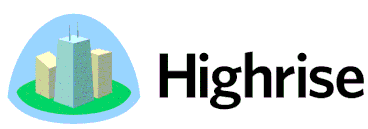

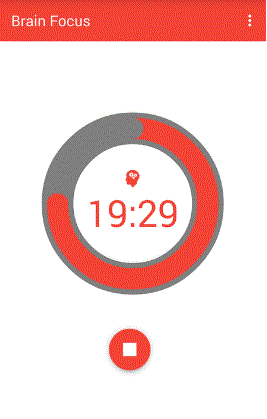
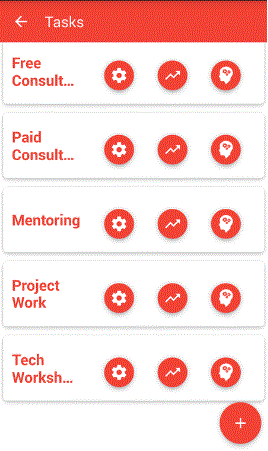
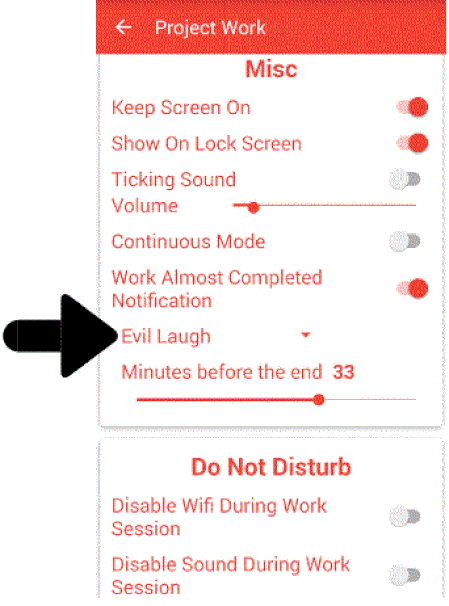
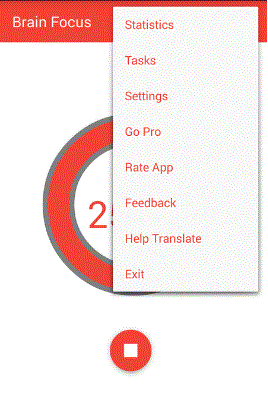
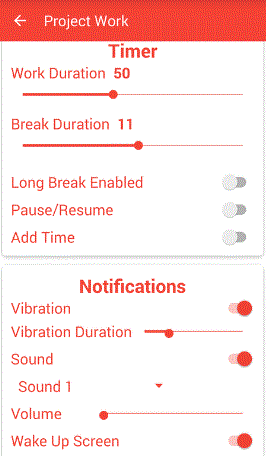
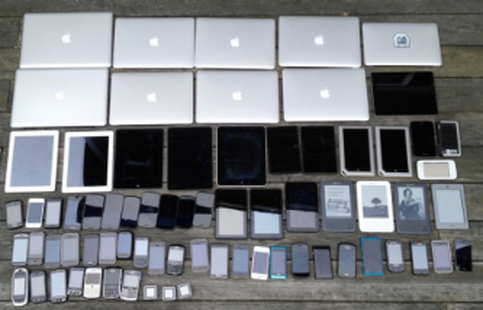
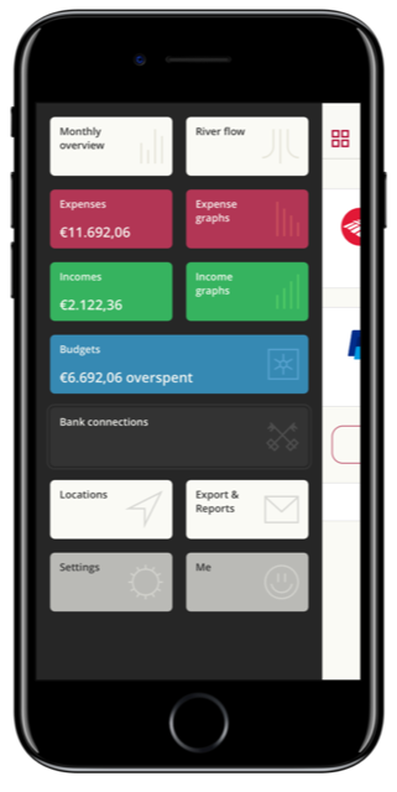
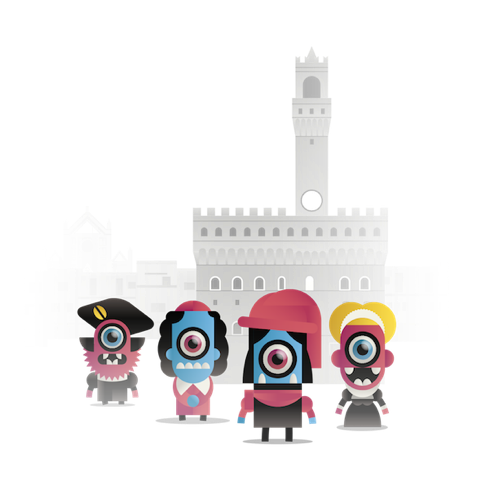
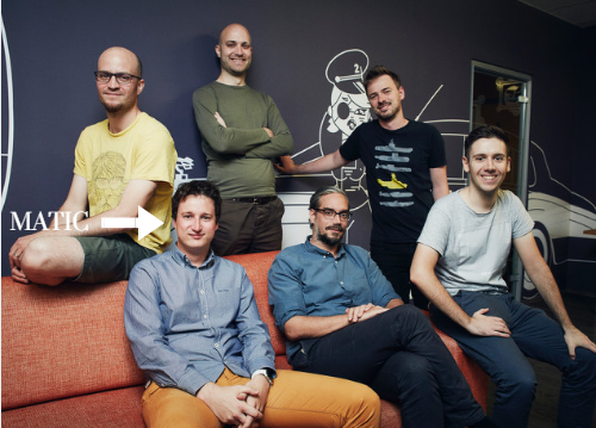
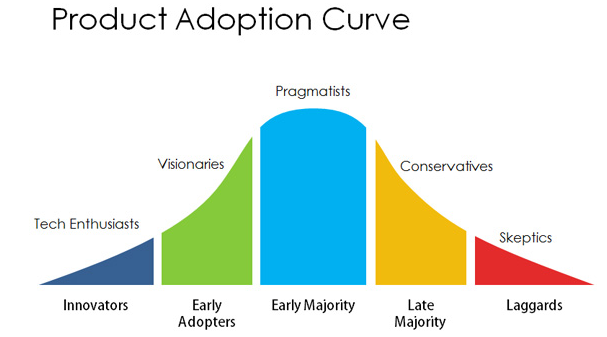
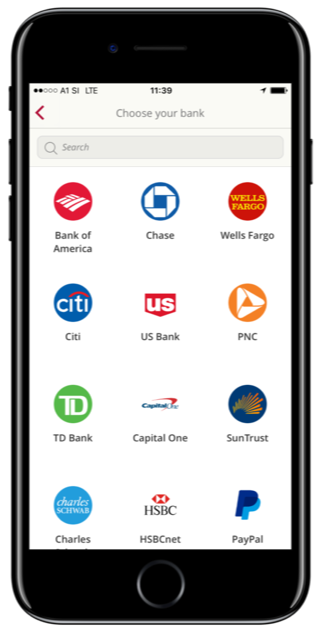
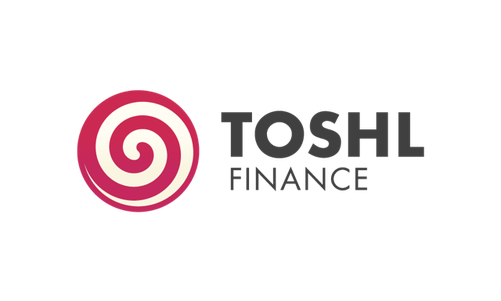
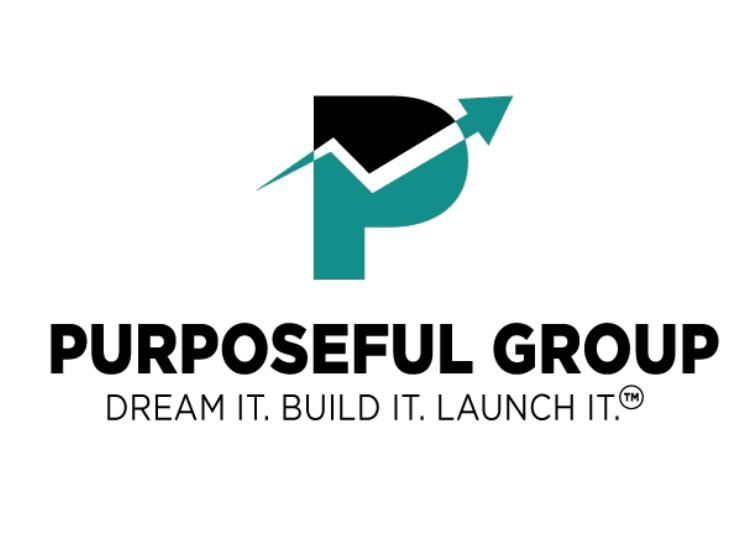
 RSS Feed
RSS Feed